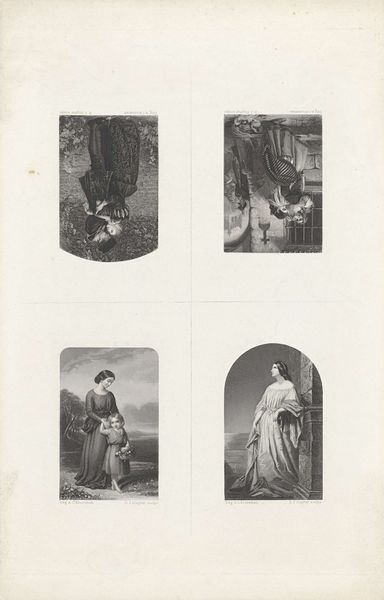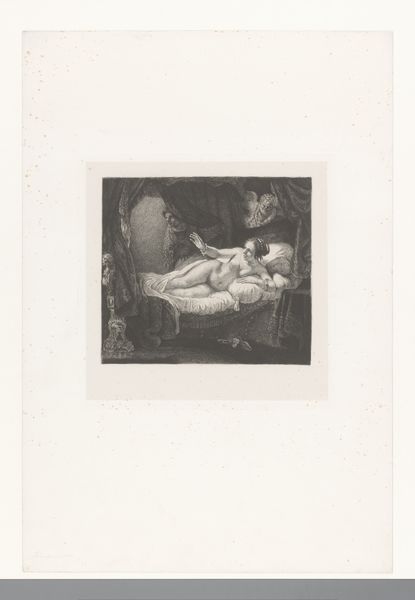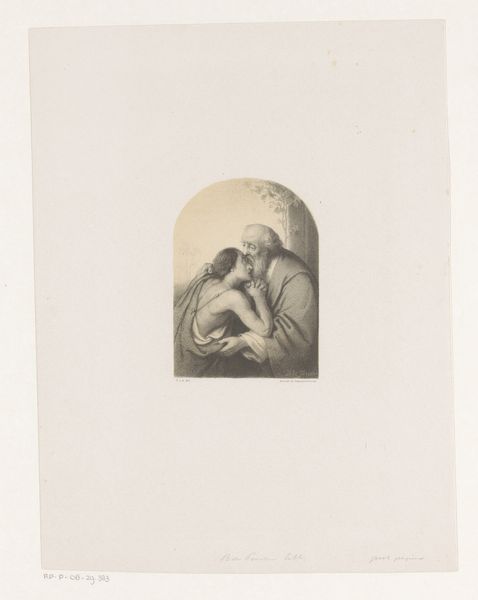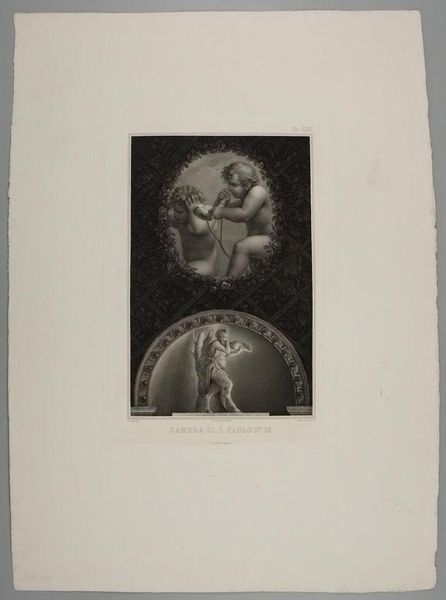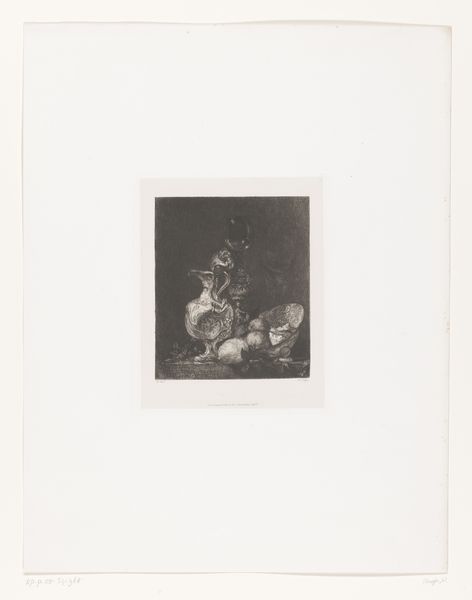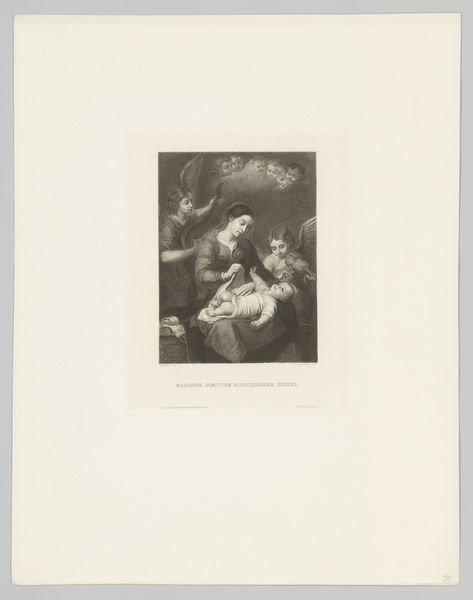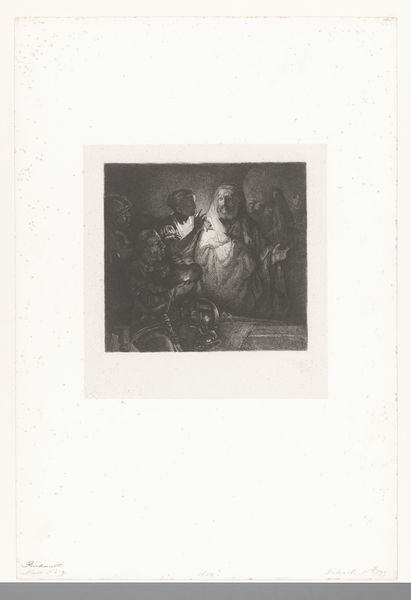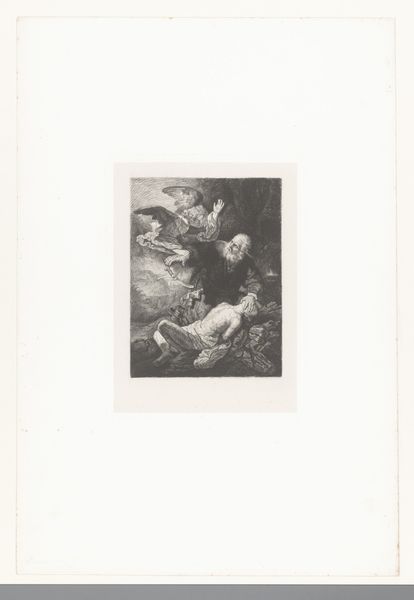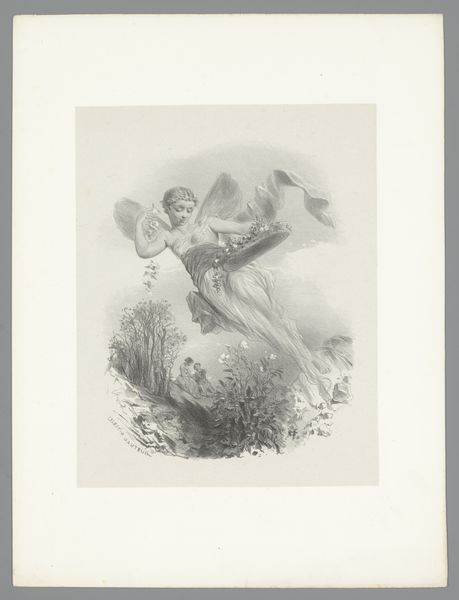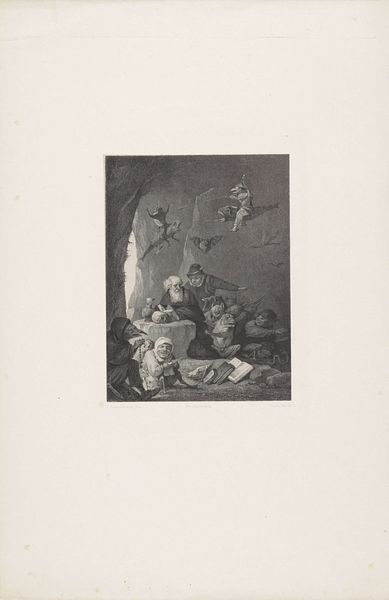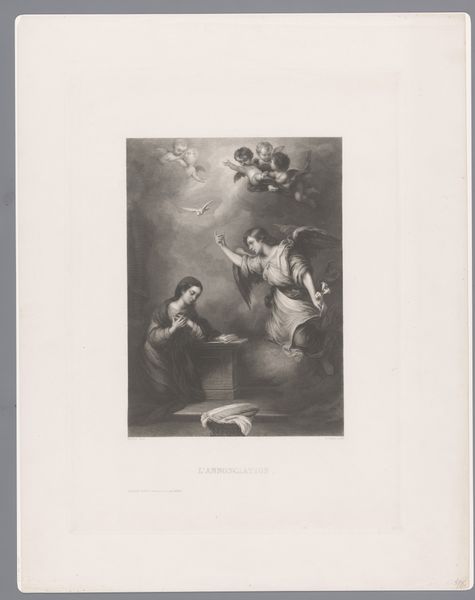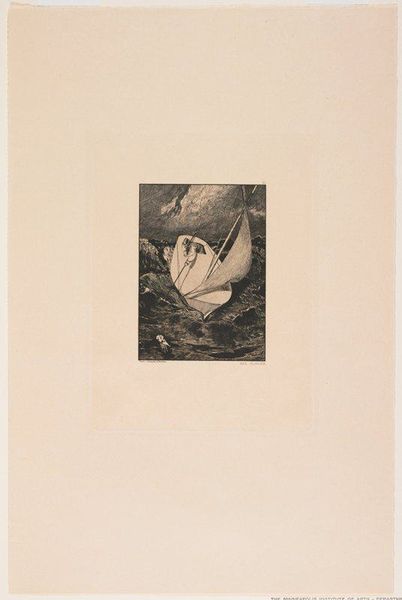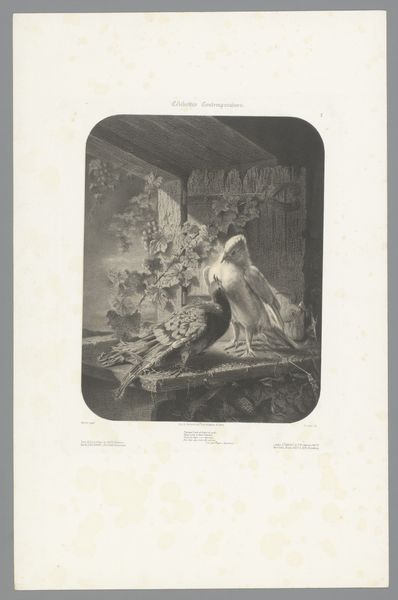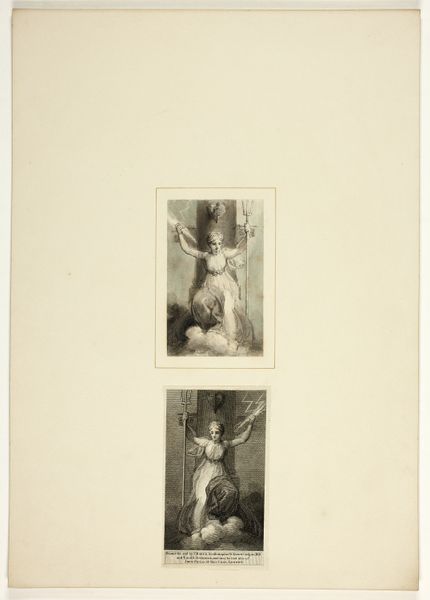
Herder en herderin - Meisje met kittens - Grootmoeder vertelt - Maria aan de voet van het kruis 1842 - 1873
0:00
0:00
dirkjurriaansluyter
Rijksmuseum
drawing, print, graphite
#
pencil drawn
#
drawing
#
light pencil work
#
narrative-art
# print
#
pencil sketch
#
pencil drawing
#
graphite
#
pencil work
#
genre-painting
#
history-painting
#
tonal art
#
graphite
Dimensions: height 354 mm, width 240 mm
Copyright: Rijks Museum: Open Domain
Editor: This is a drawing entitled “Herder en herderin - Meisje met kittens - Grootmoeder vertelt - Maria aan de voet van het kruis,” made by Dirk Jurriaan Sluyter between 1842 and 1873, using graphite. There are actually four images on the page, each with a distinct narrative feel, but rendered in delicate pencil strokes. What stories or symbols do you see woven into this quartet? Curator: Ah, an intriguing assembly! It's more than just a collection of scenes; it's a carefully constructed arrangement. Notice how each panel utilizes different framing, different techniques? Each one speaks to very specific visual traditions, so let's unpack a few. That top-left panel, the shepherd and shepherdess. Where have we seen such poses and idyllic imagery before? Editor: It makes me think of classical pastoral scenes... you know, scenes representing an idealized, rural landscape? Curator: Exactly! And in direct opposition, you have Mary at the foot of the cross. We have gone from pagan idyllic to a Christian scene. Observe her posture and the soft curves versus sharp angles which speak of sacrifice, a direct symbol from Christian stories, or icons. Now look at how Sluyter uses domestic scenes of family closeness as something parallel, or even equal, to those historic ones. Is he inviting us to rethink the sacred? Editor: So it’s a conversation between different kinds of stories... It is playing with themes of love, sacrifice and... daily life? It almost gives everyday life a sacred quality by placing them next to those Biblical and Classical scenes. Curator: Precisely. By putting these next to each other, do we think more or less of either story? Are the images connected by any repeating formal elements? Do they amplify each other, or comment ironically? I'd suggest keeping those questions in mind as you look around this room... and the world. Editor: That's given me so much to consider, really appreciate this perspective, thank you.
Comments
No comments
Be the first to comment and join the conversation on the ultimate creative platform.
